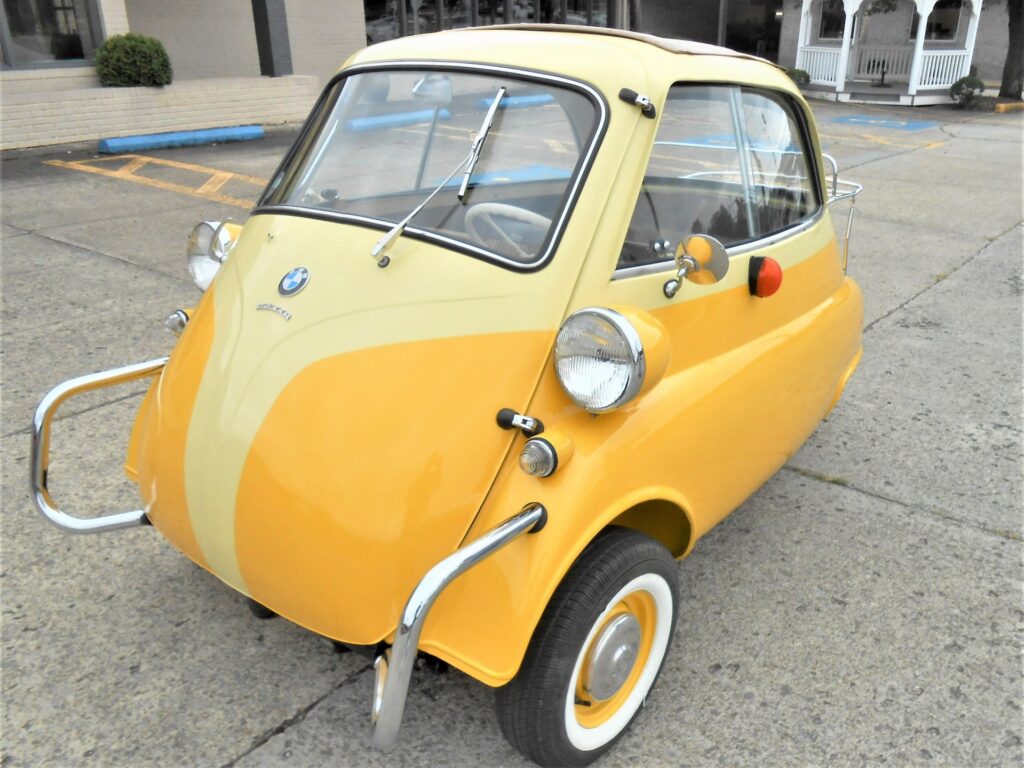
The 1962 BMW Isetta, often referred to as the ‘bubble car’, is a unique and significant chapter in the annals of automotive history. Marking the end of a significant era, this microcar was the final model of the Isetta series, serving as a testament to innovation, resilience, and economical practicality in post-war Europe.
Origins and Evolution:
Born out of Iso SpA, an Italian refrigerator and small truck manufacturer, the original concept of the Isetta was to create a compact, affordable car for the masses. The resultant design was an egg-shaped, two-seater car that was both economical and practical. BMW, recognizing the potential of this design, obtained a licensing agreement from Iso and began its own production of the Isetta.
Reengineering the original design to meet German standards, BMW replaced the two-stroke engine with its own four-stroke motorcycle engine. The revamped design was a hit among the European masses for its affordability, reliability, and remarkable fuel efficiency. The Suez Canal crisis of 1956, resulting in fuel rationing and shortages, only heightened the Isetta’s appeal due to its stellar fuel economy.
As the 1960s emerged, the Isetta had secured a firm foothold in the market, catering to urban dwellers who appreciated its compact size and maneuverability in city traffic and tight parking spaces.
1962 BMW Isetta: Specifications and Design:
The 1962 BMW Isetta continued to incorporate the 247cc single-cylinder, four-stroke engine, outputting approximately 12 horsepower. Despite modest by today’s standards, this was adequate for the compact Isetta, enabling it to reach speeds up to 53 miles per hour (85 kilometers per hour).
Retaining its iconic egg-like shape and single front-opening door, the 1962 Isetta’s design was an automotive oddity that turned heads wherever it went. Its compact dimensions were perfect for navigating congested city streets and snug parking spots.
Inside the cabin, the Isetta, while small, comfortably accommodated two adults. The interior, characterized by its simplicity and functionality, featured a bench seat and ample headroom due to the tall, bubble-like design of the cabin.
For suspension, the 1962 Isetta sported a robust setup, with an independent front suspension utilizing a leading arm and coil springs, and a semi-elliptical leaf spring at the rear directly attached to the swing arm carrying the engine and the rear wheel. Braking was facilitated by drum brakes on all wheels, providing sufficient stopping power for the microcar.
Legacy and Influence:
The 1962 model marked the end of the Isetta’s production run, with the series having played a crucial role in reviving BMW’s fortunes and setting the stage for the company’s future successes. Even after the end of its production, the Isetta’s influence did not fade. Its design principles can be seen in modern city cars prioritizing compact size, fuel efficiency, and maneuverability.
The Isetta remains a favorite among vintage car collectors, cherished for its distinctive design and historical significance. It stands as an embodiment of a time marked by innovation, resilience, and adaptability to change, which continues to inspire the automotive industry today.
In conclusion, the 1962 BMW Isetta captures a unique moment in automotive history. Experience the innovative design, economical practicality, and intriguing specifications of the final ‘bubble car’ that marked the end of an era while paving the way for the future.
